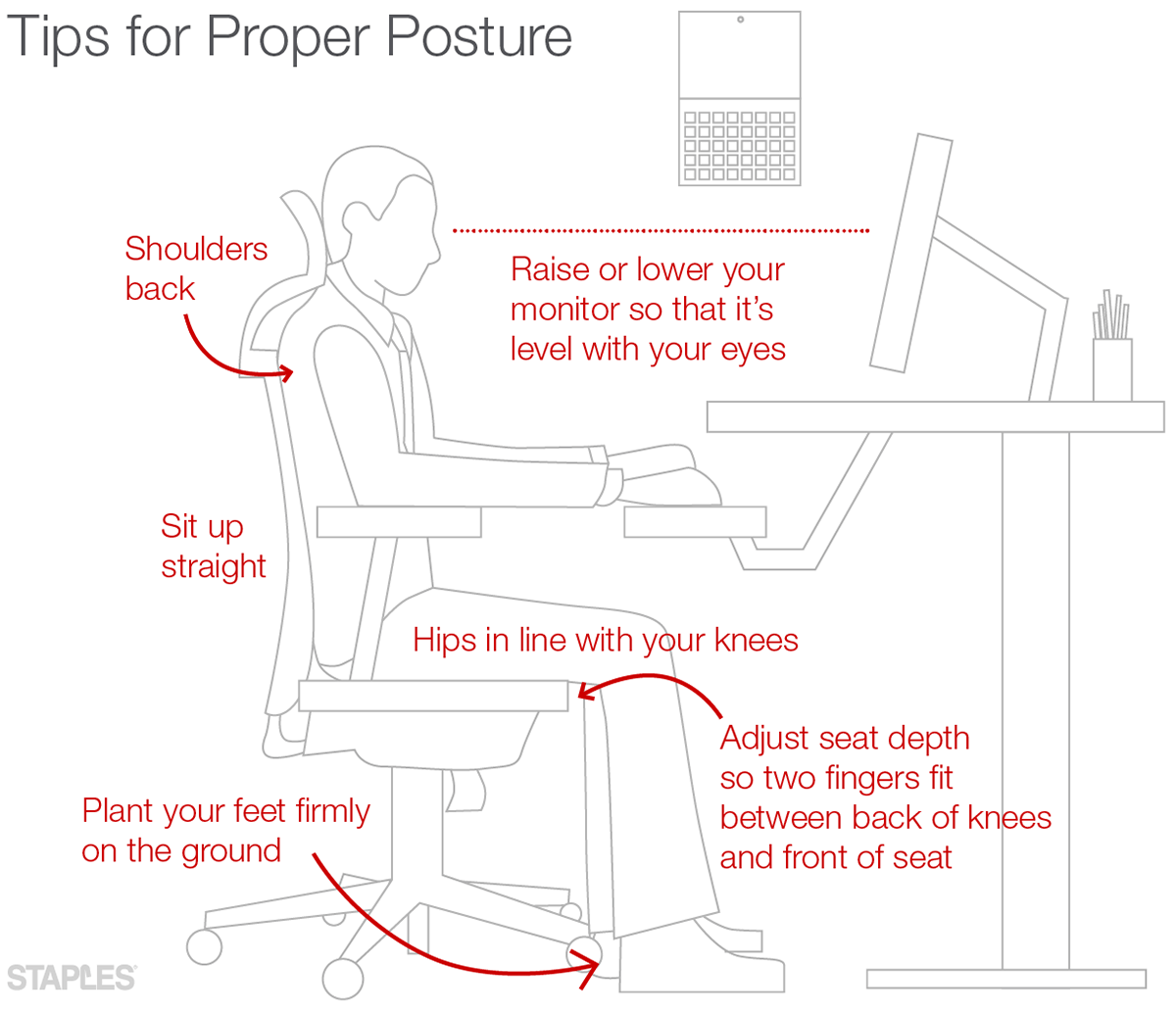Best Chairs for Back Posture

Remember all those times Mom told you to “sit up straight”? She was right. Not only does pushing your shoulders back and sitting / standing taller give you a greater air of confidence, it also helps to prevent back pain.
It’s a “chicken or the egg” type conundrum: Poor posture can result in a bad back, yet sitting in a chair that doesn’t encourage good posture can make bad back pain even worse. If your chair doesn’t provide you with proper support for your lower back and pelvis, it can cause your back muscles to tire, driving you to slouch over your desk. You may think you’re giving your tired muscles some relief by slumping forward and leaning on a flat surface, however, you’re doing more harm than good.
The Proper Way to Sit in a Chair
You can have the best chair in the world, but if you’re not using it correctly, it won’t be nearly as beneficial at preventing and relieving back pain as it could be. Whether you’re sitting in your car on a morning commute, or in a chair at your desk at the office, good posture is universal. To help you achieve your best posture possible, here are some tips to remember the next time you catch yourself craning your neck to view your monitor or slumping down in your computer chair:

- Sit up straight.
- In a seated position, make sure your lower back is pressed firmly against the lumbar support of your chair.
- Shoulders back.
- Imagine hands on your shoulders pressing them down. From this position, push your shoulders back, drawing your shoulder blades together closer towards the spine. This will help you to sit up tall instead of rounding your back and collapsing against the back of your chair or slouching forward. It may feel a little uncomfortable at first, but over time, this will help reduce and prevent back pain.
- Hips over knees.
- Sit with your knees at a 90 degree angle with your hips in line with your knees.
- The two-inch rule.
- Adjust your seat pan so that the edge of your seat is not pressing uncomfortably against the backs of your knees. Keeping your lower back supported, try to leave two inches of space between the backs of your knees and the edge of your seat. If you don’t have an adjustable seat pan, scoot forward and sit tall. Adjust the back of your seat or use a bolster to keep your lower back supported if your chair is not adjustable.
- Best foot forward.
- If you have an office chair that is height adjustable, raise or lower your chair so you can plant your feet firmly on the ground. If you’re short and your chair doesn’t quite allow your feet to touch the ground, invest in an ergonomic footrest to encourage that 90 degree angle of your knees and prevent strain on your lower back.
- Eye level.
- Leaning your head forward or tilting it back to view your monitor can (literally) be a pain in the neck. Raise or lower your monitor so that it’s level with your eyes.
- Angle your arms.
- The magic 90 degree angle doesn’t just apply to your knees. Keep your arms at a 90 degree angle as you type.
Knowing the fundamentals of good posture is important even before you start shopping for a new chair. Understanding how you should sit in order to get the maximum benefit from your new home or office chair can help you test it out before committing to buy. Here’s to your good posture and your good health!


